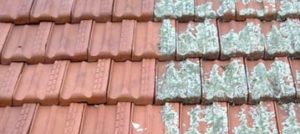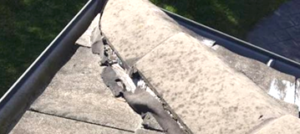Anyone who has suffered a leaking roof knows just how important the crown of the house is. Between constantly worrying about the weather affecting your roof, the buckets and the towels, it is a continuous problem that only worsens until it is properly resolved.
Our roof is the most important feature of our house, serving to keep the rain, snow and sun outside. Therefore, a small leak can quickly become a bigger problem and, if left unrepaired, cause serious structural damage over time.
To help combat this, we have compiled a list of the most common causes of a roof leak to help you identify the source of your problem.
First, however, it is important to ensure that the leak you are experiencing comes from the roof. Many things can cause water to drip through your ceiling, from condensation from poorly ventilated and humid spaces to leaks from improperly sealed terraces or bathrooms. Try to find the route the water takes and ensure that it comes from the roof rather than a different source.
The 5 most common causes of a leaking roof:
-
Age
Age is perhaps one of the most common causes of a roof leak. People often forget their roofs, leaving them neglected for long periods without checkups or minor repairs. Like anything, roofing material experiences deterioration with age, caused by wind, erosion and heat from the sun, melting the tar from shingles, creating cracks and turning important parts of the roof brittle.
-
Roof vents and chimneys
Roof vents, which help bring air into the house or chimneys in older properties, are some of the most common culprits of roof leaks. The material sealing the base of the structures to the roof can crack or misalign and allow water to seep through.
-
The Gutter
The gutter serves an important function in helping funnel water neatly away from the house; however, it is also prone to cracking or becoming blocked by debris. Sometimes, a gutter is also improperly placed and cascades water onto a lower roof, which can cause oversaturation after a heavy rain.
-
Tiles or shingles
A roof often frequented by contractors or heavily exposed to weather that it is not properly built to withstand can cause tiles or shingles to become damaged or fall off entirely. Seeing different colours on your roof or tiles in your garden are visible signs that you might have a serious issue.
-
Roof junctions
Roof junctions, or the areas where two sections of your roof meet, usually experience heavy flows of water during rain. Flashing is a metal seal that normally runs along this junction and helps to direct water safely to your gutters. If this material is broken or the joins between it and the roof deteriorate, it might be allowing water to seep through.
We advice that you get in touch with a professional roofer to schedule an inspection of your roof.
